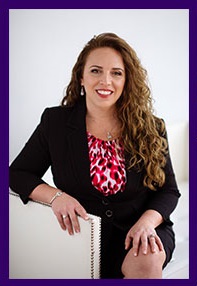Uh, wait, what?? Of course, it needs a charter, right? Well, maybe not.
If you are setting up a PMO that is meant to be a temporary endeavor with a start, finish, and a unique product, service, deliverable, or outcome created (sound familiar?), then yes, it might need a charter. But you know what it actually is then?
A project charter. A charter for the project and the project team (in this case, also being referred to as a PMO). It’s not really a PMO charter.
Whether you call it a PMO or a project team, if the group is meant to be temporary and serve the goals of one specific project or program, then yes, a charter is necessary…like it would be for any other project.
However, if what you are building is really a PMO that is meant to stick around for a while, it’s an organization, a business unit, a more permanent fixture in the organization. What does an organization need? A business plan, not a charter.
Charter = Temporary Endeavor
Business Plan = Sustainable Business Unit
Why does this matter?
It sets the tone for the entire organization from the beginning. That which we treat as temporary, we will continue to treat as temporary. It’s a self-fulfilling prophecy. That which we treat as a permanent, sustaining solution to a business goal, we will treat as a permanent fixture to achieving that business goal.
We often don’t realize how much we set the tone when setting up an organization by how we talk about the organization, how we plan for the work we will do and how we will do that work. Why not setup your organization from the beginning as if you already have that support, stature and credibility necessary to drive the organization more swiftly and thoughtfully to its goals?
What if you don’t have the credibility yet to feel comfortable with what you are creating? Shoot, most of us don’t feel comfortable in the beginning. I never did, even when I knew exactly what I needed to do. Why? Because you never really know exactly what needs to get done. We think we know and then along the way some stuff happens and we realize that half our assumptions were wrong. That’s why we always have to be flexible and listen to what our gut, our peers, and our stakeholders are telling us. Be open to the possibility of what if in your solution development.
Act as if…
My coach wrote a great book that I highly recommend to everyone. It’s called Steal the Show, by Michael Port. In this book, he talks about acting “as if” when you don’t yet have the confidence or comfort necessary for you to perform at your best in the role you are trying to create for yourself. The goal is to give you that confidence by acting as if you already have that buy-in you need. You need to set your intentions and get purposeful about the outcomes you want to create.
This doesn’t mean that you don’t make any effort to build that credibility and needed support along the way, you do, but you have to go into this business of setting up a PMO with the clear intention that you will build that credibility and support.
Design the organization for now…
You won’t know how the organization should look a couple of years from now when you start building because you need to do a lot of listening, surveying, and then planning. But you can start to build where you think it should go, start small, build some key services, etc. Then, as you get input and feedback, you can continue to evolve the organization.
What should the business plan include?
Click here to grab my PMO Template Pack Inside the IMPACT Inner Circle Membership
A quick google search of “business plans” will give you a good idea of what needs to be included, but some basics that you may want to include are:
- Scope – What areas of the organization will you serve?
- Services – How will you serve those areas of the organization?
- Staffing – What staff will you need to do perform these services?
- Stakeholders – Who will you serve and how will you engage them?
Remember, this business plan won’t be static. No organization is. What puts you at a distinct advantage here is that you are good at planning. You can put together a plan in your sleep (and probably do), so don’t let that be an imagined hurdle here.
Start with the end in mind. Don’t forget, you are building a sustainable organization and that you need to get buy-in quickly. Your very first step is to ask the question Why? Why are you building this organization in the first place? What gap are you filling or business problem are you solving? Once you have the big “why” nailed down, the rest will be a lot easier!
T hanks for taking the time to check out the podcast!
hanks for taking the time to check out the podcast!
I welcome your feedback and insights!
I’d love to know what you think and if you love it, please leave a rating and review in your favorite podcast player. Please leave a comment below to share your thoughts. See you online!
Warmly,
Laura Barnard








Hi Laura. Although I agree that we must go into PMO with a positive attitude to getting buy in, I am not sure I agree to always needing a business case rather than a charter for permanent offices.
A charter for me is a formal document describing the rights, aims, or principles of an organization or group of people and having used one several times, puts something out there for people to hold us to account, to give us focus, and give clarity around the nature of the PMO.
A business case on the other hand is a justification for a proposed project or undertaking on the basis of its expected commercial benefit. In some cases this is the document that is not needed, eg when the solution options are already reviewed and agreed upon and financials are not the main driver. It also largely depends on the organisation, its characteristics, culture and principles.
I have been in both situations and believe that they both add value – we just need to be pragmatic in how and when we use them.
Hey, Emma-Ruth!! It’s so fantastic to see you here! THANK YOU for reading the article and taking the time to write such a thoughtful response.
I agree with you completely! A business CASE is for a project idea. That’s how I use them in my IMPACT PM methodology. What I’m talking about here is a business PLAN, which is usually used to define how an organization or business unit will operate.
Usually, we use Charters for projects, not organizations. I’m wondering if all of this is simply semantics between us or if things are titled differently in the UK. I think we are in agreement, in spirit and content, about what should be covered. Please share your thoughts!
My desire to draw a distinction here is a matter of creating clarity on focus, purpose, and goals and purposefully SHIFT a mindset that many of us have when we embark on starting a PMO vs. a project. Usually, we use a project charter to start a project (which often started with a business case for a proposed idea). A project is by definition, a temporary endeavor. Where, a business plan is typically used for a more permanent organization to define the goals, services, measurements, outcomes, etc. expected of that business unit.
I’m hoping to shift the way people think about and embark upon a PMO setup and get crystal clear on what they are trying to do:
Are we in or are we hesitating because we aren’t sure it’s going to work?
Are we trying to create a sustainable business unit PMO or a temporary endeavor meant to solve a short-term need (such as a PMO setup for a project or program that ends when the program ends)?
If it’s meant to be a sustainable business unit, let’s treat it like one from the start. 🙂
Thank you again, for the thoughtful comment, and let’s stay in touch! I think we could do some fun stuff together!
[…] Does a PMO need a charter? Probably not. […]